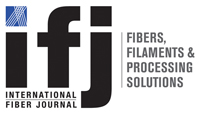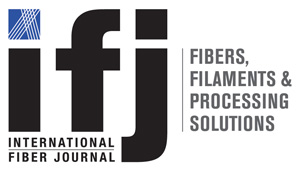Trends, Challenges and Opportunities on Stage at EDANA’s Outlook™ 2024 in Rome
Hygiene is in the hot seat in Europe, according to presenters at EDANA’s OUTLOOK™ 2024, held this fall in Rome, Italy. The conference set record attendance with 549 delegates from 212 companies and 37 countries across the nonwovens personal care, hygiene & wipes products value chain. Twenty-six speakers shared their unique perspective through five key sessions on the future of hygiene products, market dynamics, new EU regulations, retail strategies, and the challenges posed by China’s aggressive push towards total automation.
“OUTLOOK™ 2024 has truly exceeded all expectations,” said Murat Dogru, General Manager of EDANA. “I am incredibly proud of the success of this event – from the high-quality presentations to the buzzing energy in the exhibition hall. It is events like this that remind us why we do what we do, serving our members and foster innovation within our community. The overwhelming positive feedback I’ve received is an acknowledgment of the hard work of our team and the vibrant engagement of everyone involved.”
For the first time, OUTLOOK™ 2024 included an exposition with 20 companies showcasing their expertise over the three days, and the showfloor was buzzing. “This event serves as a compact version of INDEX™ for the hygiene sector, offering the opportunity to connect with the right people and provides a highly convenient platform to meet with participants,” said Johan Berlin, Managing Director – Investkonsult Sweden and main sponsor for the event.

Retail Influencers
Some presentations raised more questions than provided definitive answers, but retail habits of consumers was a topic that provided solid strategic insights.
Per Brandberg, Consultant – Euromonitor International, discussed demand drivers in retail hygiene and wipes. Retail hygiene, including nappies, diapers, and menstrual products, showed stable demand and value growth due to inflation. Key drivers include an aging population, lifestyle factors, and health awareness. Consumer preferences prioritize absorbency, fit, and value. Market claims
emphasize skin health, natural ingredients, and environmental friendliness. Personal wipes, which constitute 90% of the market, saw growth due to hygiene concerns and self-care routines. The forecast predicts positive growth driven by demographics and GDP per capita, with soft drivers impacting the category positively.
Jack Stratten, Director of Insider Trends highlighted, “The polarization of choice: How retailers and brands are responding to market and product saturation.” An unprecedented current market saturation leaves 64% of consumers feeling overwhelmed by choices. Popular massive retail platforms are driving product saturation, resulting in diminished consumer loyalty. Also, he shared that consumers are utilizing AI-driven options that they are bombarded with, noting that 70% of Netflix consumption is based on AI recommendations rather than user’s direct searches, a fact according to Sami Helin, Global Account Director, Coveo.
An example of this is mass retailer Shein, who releases between 2,000 and 10,000 new styles every day – 30 times more than any competitor yet rarely are those styles in stock. They are AI-driven presentations that are fulfilled on demand.
Some consumers are rejecting this mass on-demand marketplace and are drawn to more relatable niche retailers – such as the UK’s subscription-only perfumer Ffern, who releases only one scent a
season, and hair care luxury brand Monpure, that focuses on hair and scalp health. Both are examples of how retailers are focusing on high-quality, curated selections.
In hygiene, Who Gives a Crap is a niche toilet paper supplier that is 100% recycled paper and gives 50% of its profits to charity. It is now the UK’s biggest toilet paper brand growing 25% a year. They merely set themselves apart with color, saying, “We noticed that no competitor ever tried to make the product fun, meaningful or visible. Always white. Always functional.”
The result: consumers now artfully display toilet paper in their homes.
Regulatory Traps
Thomas Broch, Sustainability & Regulatory Affairs Director at Fibertex Personal Care, and Bart Waterschoot, Group Sustainability & Product Stewardship Director at Ontex spoke on regulatory landmines that present a complex business environment to navigate the new level of transparency driven by the various new standards.
“Sustainability and ESG regulations have increased by 155% globally in the past decade, with 1,255 regulations introduced worldwide since 2011,” Broch noted. “Since the turn of the millennium, there’s been a 647% increase in ESG regulations. It is our challenge to keep up with these.”
They include Reporting Requirements, such as the EU Corporate Sustainability Due Diligence Directive (CSDDD); Products and Materials, such as the Eco-design for Sustainable Products Regulation (ESPR), and Waste Management, such as The Single-use Plastics Directive (SUPD), among others. “We are in this together,” Waterschoot said, advocating for increased cooperation within the industry and industry associations to achieve the regulatory objectives.
Graham McMillan, Founder, First Avenue Consulting, spoke on the UK’s ban on plastic in consumer wet wipes by 2026, driven by environmental concerns such as sewage pollution and combined sewer overflows exacerbated by climate change.
He noted, “The majority of consumer wet wipes in the UK were already plastic free. That statistic was hugely useful, because it meant government started listening to the industry. Previously, they had probably thought that the industry has not done anything. Actually, the industry has been taking a lot of action.” This helped to create an environment that built trust between industry and government, and is a model going forward for industry to be proactive.
Innovation and the China Effect

Keynote speaker Joachim De Vos, Managing Partner and Founder of Living Tomorrow & TomorrowLab, an expert in strategic innovation and scenario planning, presented a riveting look at life in the future with technology, emphasizing how Generative AI can be leveraged to develop scenarios for the nonwovens
industry, serving as a powerful roadmap for future innovation.
As the hygiene industry addresses due to the politicization of sustainability and circulatory issues in the EU, De Vos said, “Companies need to innovate and adapt to stay competitive.” Yet, bringing a successful innovation to market is often tricky, and ridden with failure due to lagging time to market, ecosystem challenges, lack of the right people and skills, and company culture, he notes as top reasons.
De Vos then delved into China’s development of robotics and automation. The country has set ambitious goals to have humanoid robots operating in 2025. They also want three world-beating companies by 2025, a reliable supply of first integrations in real-life by 2027, and humanoid robots in all industrialized environments by 2029.
The keynote “The China Challenge,” from James Kynge, Europe-China correspondent for the Financial Times, also emphasized China’s rapid rise as a global tech superpower, noting that the country produced more than half of the world’s robots last year. This is a direct result of the struggle by Chinese factories to find workers, and this trend is expected to intensify.

“China’s population of 1.4 billion people is shrinking, and by 2030 it will have about 200 million fewer workers than it has today; and by the end of the century, it will have 800 million fewer workers,” he shared. “The unemployment rate of 18- to 24-year-olds in China is extremely high, about 20% – that’s extraordinary.” This stems from the fact that the working age group is now primarily white-collar educated; they do not want blue-collar jobs.
“There is a critical labor shortage in high-tech blue-collar workers and a big oversupply in white collar, you know, university graduates. This is a big, big social problem, because those young people are the pride of China. They had their parents’ sacrifices heaped upon them, and now 20% of them can’t find a job.” China’s solution to the blue-collar issue is robotics.
Overall, consumers are strongly supporting the hygiene marketplace, timely innovation is an absolute industry must, adherence regulatory mandates will be challenging to balance with innovation, and, in the meantime, China continues to inch ahead in the industrial race of automation.


